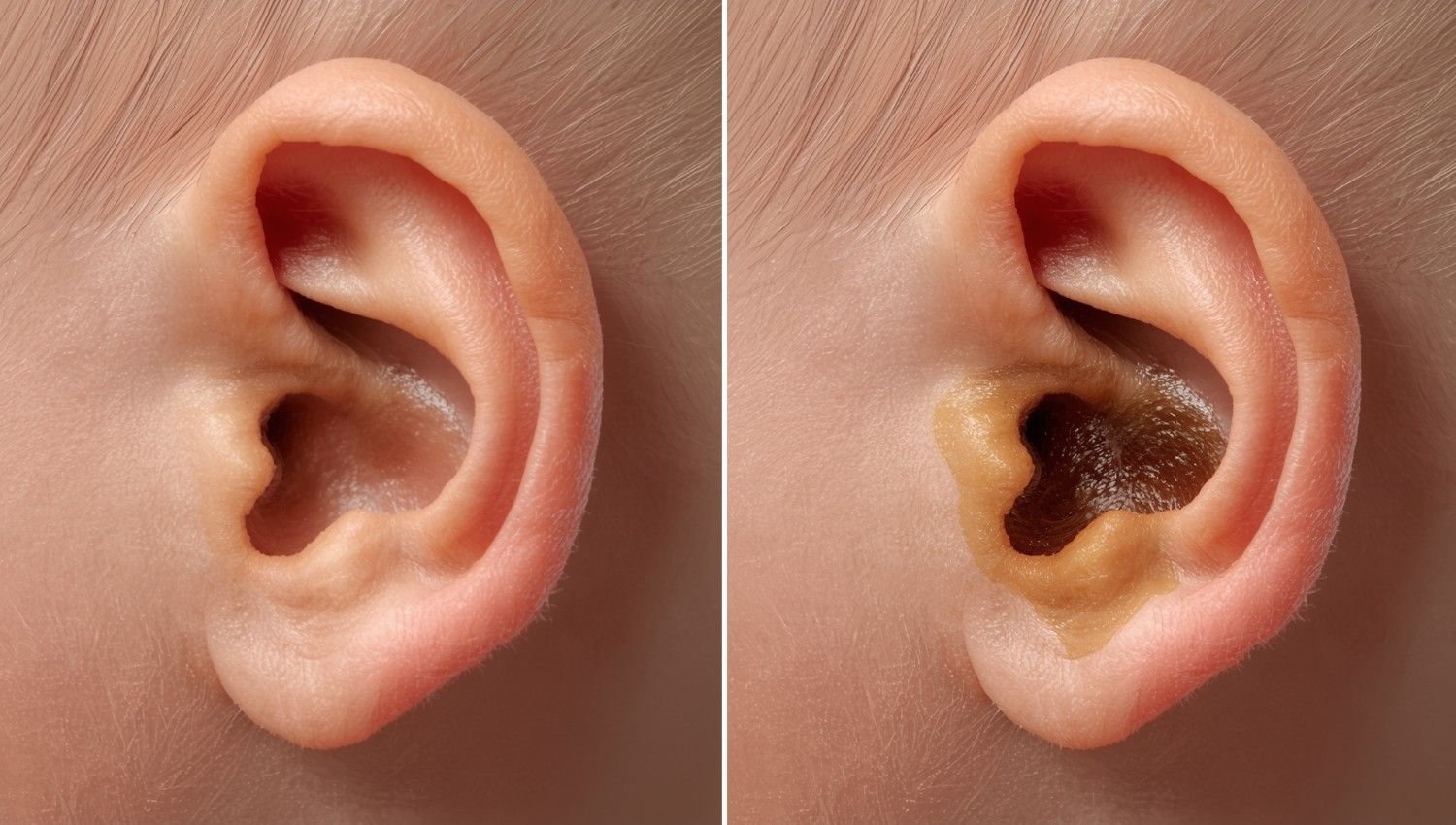Introduction
As a parent, I’ve learned that every little thing about your baby can make you pause — from the color of what’s in their diaper to the sound of their cry. One day, while cleaning my baby’s ears, I noticed a bit of earwax that looked pale yellow, and other times, it had a darker shade. I wondered if it was normal or if it might mean an infection was starting. Through my experience and talking to our pediatrician, I discovered that earwax is a sign of a healthy, functioning body — something completely natural that protects your little one’s ears from germs and dirt.
This guide helps parents like me understand the difference between harmless earwax and possible red flags that may need attention. Most of the time, that bit of wax is just your baby’s body doing its job perfectly. Knowing what’s normal— and when it’s not — can make you feel more confident in caring for your baby’s ears.
What Causes Earwax to Build Up in the Ear?
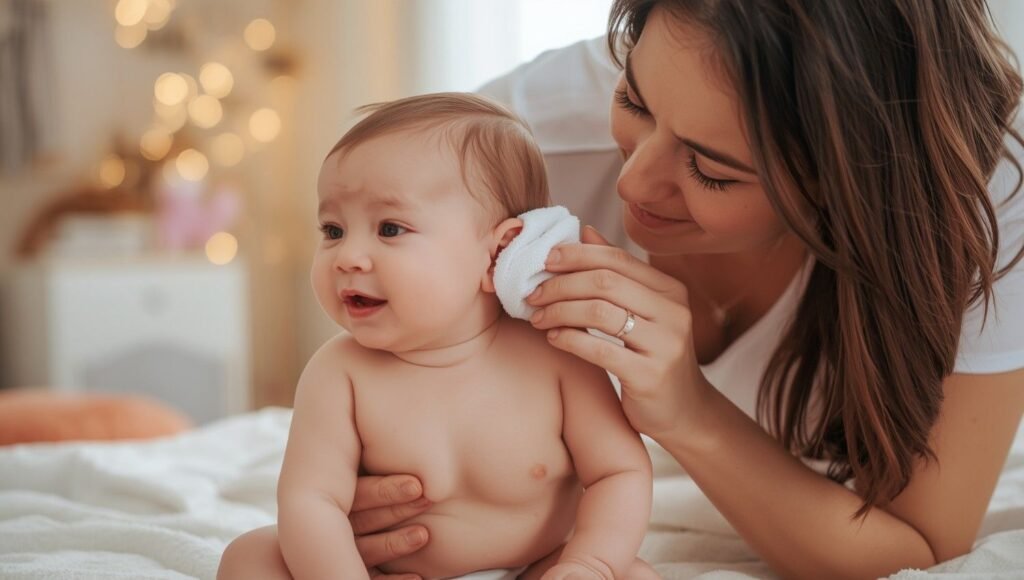
From my experience as a mom, I learned that earwax — also called cerumen — is a natural substance your ears make to stay clean and healthy. The ceruminous glands inside the ear secrete this wax to form a shield, trapping dirt, dust, and tiny particles before they can reach the eardrum. Normally, wax builds up gently, then dries out and moves toward the outer ear, where it simply falls out. It’s the body’s way to expel what’s no longer needed — not a sign of being dirty.
However, sometimes a build-up happens when the wax accumulates faster than it can be removed. You might see a large amount of wax that’s visible, often yellow or brownish, and waiting to drop out naturally. It’s amazing how the body manages this on its own, and most of the time, all you need to do is let nature take care of your baby’s ears.
When Is Earwax a Problem?
Sometimes, your baby might face problems if the ear canal becomes plugged with too much wax. I remember noticing my little one not responding to sounds as clearly — a sign of poor hearing caused by a mild blockage. In some cases, babies might experience earaches, strange noises, or even tinnitus, which is like a soft ringing sound.
You may also notice your baby rubbing or tugging around the ear because of itchiness or discomfort. These moments can be worrying, but understanding what’s normal and when to get help makes a big difference. If any of these signs appear, it’s best to have your pediatrician take a quick look to keep those tiny ears healthy.
How Should I Remove My Baby’s Earwax?
When my baby had a build-up of earwax that caused minor problems, our pharmacist suggested trying ear drops first. These help by softening the wax so it naturally falls out. You can buy them at a pharmacy, and the pharmacist can advise which product is best. To use them, lay your baby on their side with the affected ear facing upwards, add a few drops, and wait while they get soaked in. Keep a tissue handy to catch any dribble that comes out. Repeat this for a few days until the wax has cleared. This gentle treatment is usually effective, and most excess wax clears without issues.
Whatever you do, don’t poke or try to remove the wax yourself — it could push it deeper or cause damage. Cotton buds may even lead to an infection. If the wax doesn’t come out after several days, see your doctor. They might suggest your baby’s ears be washed out through ear irrigation, or refer you to an ear, nose, and throat (ENT) surgeon. The procedure is quick, safe, and painless, giving your little one relief while keeping those tiny ears healthy.
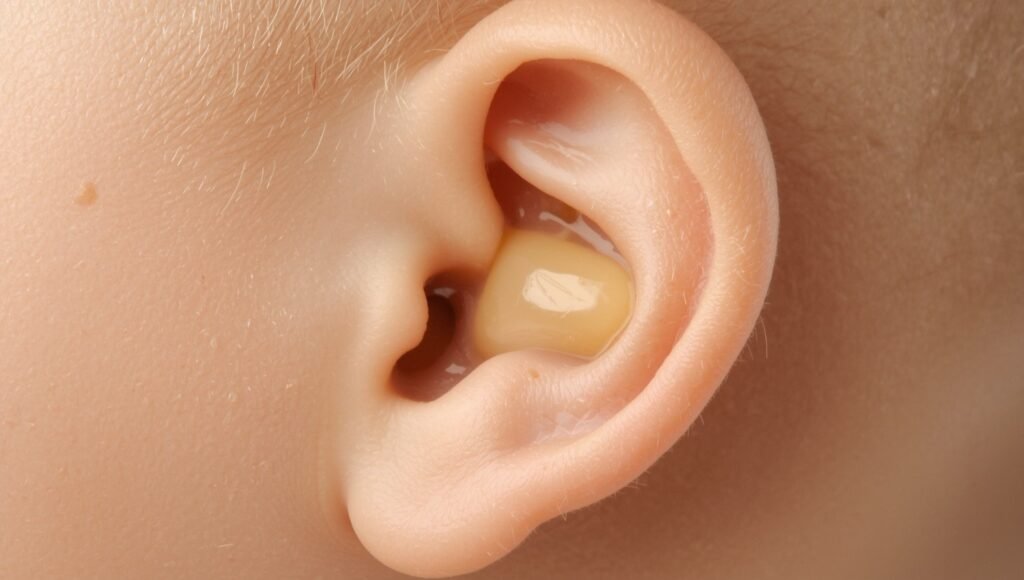
What Does Normal Baby Earwax Look Like?
From my own experience, normal baby earwax can have many kinds of appearances, and most are completely healthy. The color can range from pale yellow to honey-colored, orange, or even light brown, depending on how much air it’s been exposed to. Its texture may feel soft and creamy, while some babies naturally have dry, flaky wax — both are perfectly fine. The amount also varies; some babies produce more than others, and that’s totally normal.
What matters most is noticing changes — a sudden shift in color, texture, or quantity might signal an issue or early symptoms of irritation. But in most cases, that little bit of wax is simply your baby’s body keeping their ears protected and clean, just as it should.
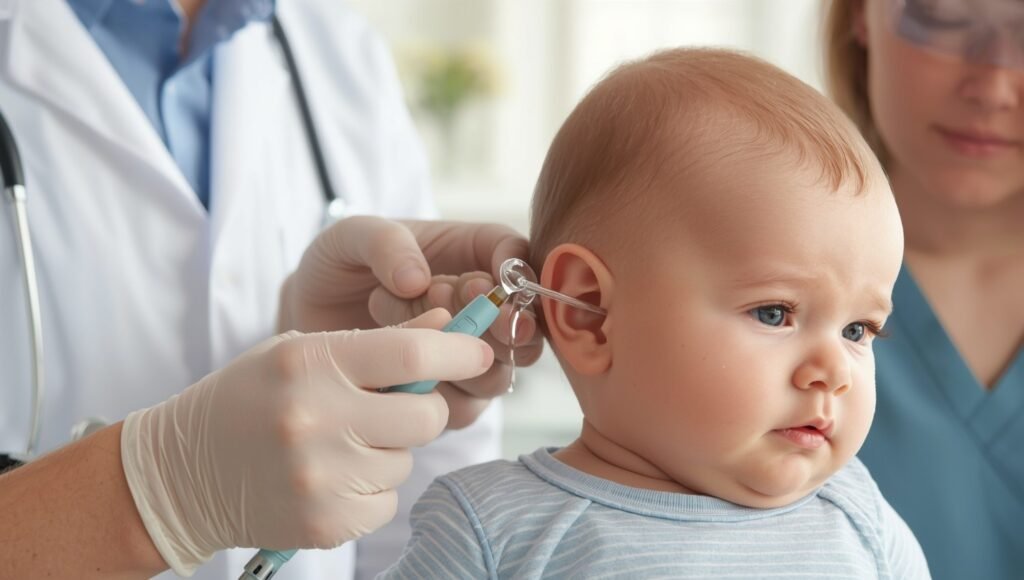
Why Earwax Is Actually Healthy?
Over time, I’ve realized that earwax has an unfair reputation for being something unpleasant, but in truth, it plays several vital roles in your baby’s health. It acts as a protective system for the ears, working quietly to keep them safe. Earwax traps dirt, debris, dust, dead skin cells, and tiny particles before they can travel deeper into the ear canal. It also repels water, keeping the area from becoming too dry or prone to irritation and infection.
In addition, earwax naturally lubricates the canal to prevent dryness, itching, and cracking. It even fights infection with its antibacterial and antifungal properties, acting like nature’s built-in cleanser. So, what might look messy on the outside is actually your baby’s body doing one of its smartest protective jobs.
Warning Signs You Should Never Ignore
While most baby earwax is harmless, certain symptoms mean it’s time to get medical attention from your pediatrician. If you notice a foul odor, it might be an ear infection. Other warning signs include pain, discomfort, ear tugging, or rubbing that leads to irritability, crying during feedings, or trouble with pressure when swallowing. A fever, especially with ear-related issues, should never be ignored. Watch for unusual color or consistency, like dark brown, black wax, greenish, yellow, or pus-like discharge. Watery fluid could mean a ruptured eardrum, and any ear drainage, discharge, redness, or swelling might point to inflammation.
You might also notice hearing changes, strange noises, or a visible blockage caused by a wax plug that’s impacted. In such cases, don’t attempt removal yourself — let a doctor or specialist handle it safely. As a parent, trusting your instincts can make all the difference when something feels off with your baby’s ears.
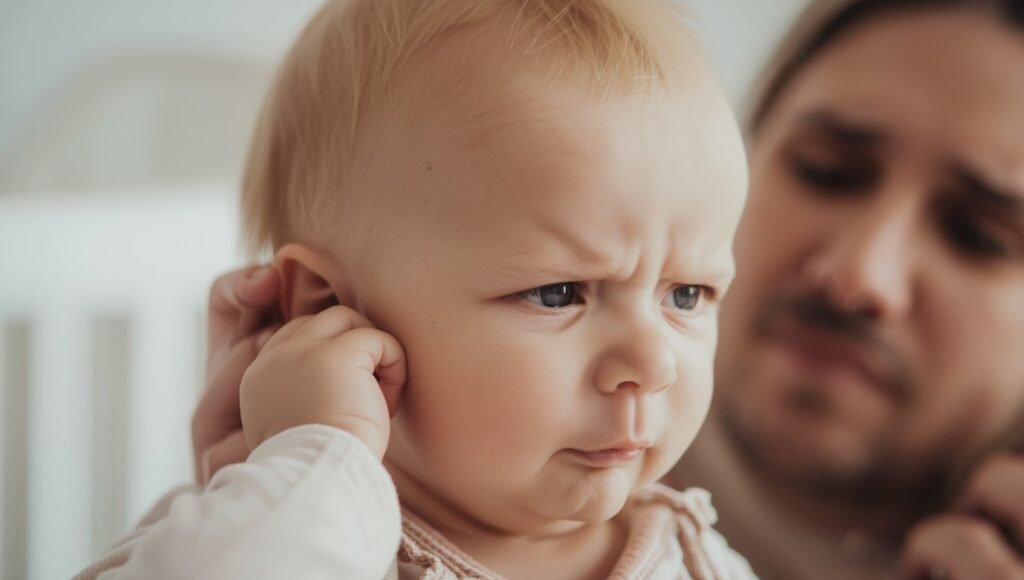
What to Do (and NOT Do) If You’re Concerned?
When you notice visible wax on your baby’s outer ear, gently wipe it away with a soft cloth that’s slightly damp. If the wax seems dry or hard, using a humidifier in your baby’s room can add moisture and help naturally loosen the buildup. You can also talk to your pediatrician about using a few drops of baby oil, mineral oil, or eardrops to soften the wax safely.
What you should never do is insert cotton swabs, bobby pins, or any small objects into the ear canal, as this can cause injury or push the wax deeper. Avoid ear candling, too — it’s dangerous and completely ineffective. From my experience, keeping it simple and gentle is always the best approach when it comes to your baby’s ears.
When to Call the Pediatrician?
As a parent, it’s important to trust your instincts when it comes to your baby’s health. If you notice a fever, pain, strange odor, or any drainage from the ear, these are red flags that mean it’s time to call your pediatrician. They can diagnose an ear infection or impacted wax and safely remove it if needed.
Your pediatrician might use microsuction or irrigation to clear the ear and prescribe the right medication, including antibiotics when necessary. Seeking care early ensures your baby’s comfort and prevents the problem from getting worse — a small step that can make a big difference in your baby’s well-being.
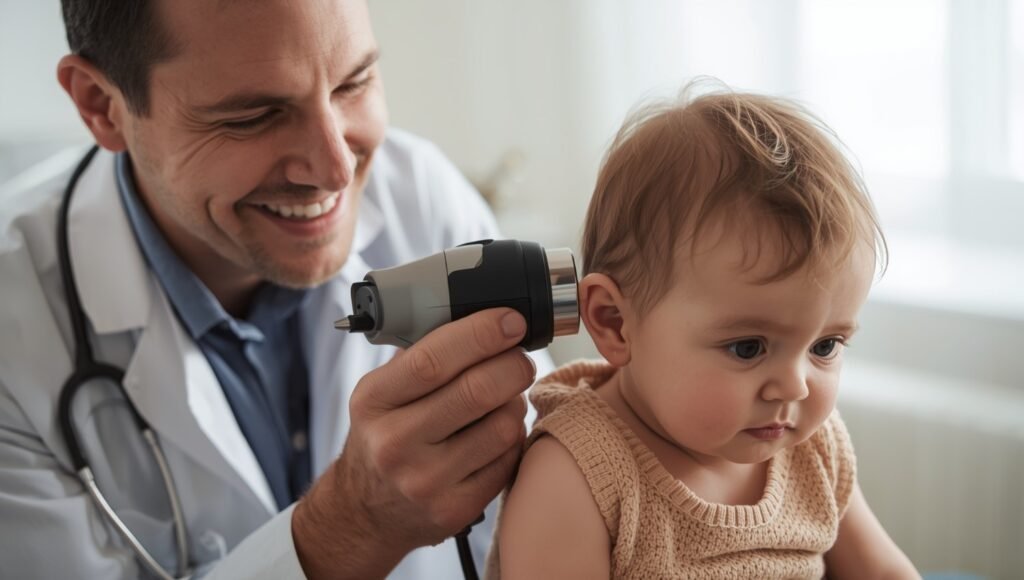
Conclusion
Caring for your baby’s ears may seem simple, but understanding what’s normal and when to act makes all the difference. Most earwax is natural, healthy, and even protective, helping keep the ears clean and safe from infection. Still, being alert to red flags like pain, odor, drainage, or hearing changes allows you to step in early and get the right help from your pediatrician.
From my own experience, I’ve learned that a gentle touch, patience, and trusting your instincts go a long way. Your baby’s body already knows how to take care of itself — your role is simply to guide, observe, and support that beautiful process with care and confidence.
FAQs About Baby Earwax
1. Is earwax normal in babies?
Yes, earwax is completely normal. It’s your baby’s natural way of keeping the ears clean and protected. Earwax helps trap dirt, dust, and bacteria so they don’t reach the eardrum.
2. What color should my baby’s earwax be?
Normal baby earwax can range in color from pale yellow to honey-colored, orange, or light brown. The shade usually depends on how long it’s been in the ear and how much air it’s been exposed to.
3. How can I tell if my baby has too much earwax?
If you see a large amount of wax blocking the ear canal, or if your baby seems to have trouble hearing, is tugging at the ear, or showing signs of discomfort, it might be a buildup that needs attention.
4. Should I clean my baby’s ears every day?
No, you shouldn’t. The ears are self-cleaning. Simply wipe visible wax from the outer ear with a soft, damp cloth — never insert anything inside the ear canal.
5. When should I use ear drops for my baby?
You can use baby-safe ear drops if there’s a mild buildup of wax, but always ask your pharmacist or pediatrician which product is best. Drops help soften wax so it can fall out naturally.
6. Can cotton swabs or ear candling help?
No, avoid both. Cotton swabs can push wax deeper and cause injury, while ear candling is unsafe and ineffective.
7. When should I call the pediatrician?
If your baby has pain, fever, foul odor, drainage, or unusual earwax color, call your pediatrician. They can safely diagnose the issue and, if needed, remove impacted wax using safe methods like irrigation or microsuction.
8. Is earwax a sign of poor hygiene?
Not at all. Earwax isn’t dirty — it’s a natural, healthy part of the body’s defense system. In fact, trying to remove it too often can cause irritation or infection.
9. Can earwax affect my baby’s hearing?
A small amount won’t, but a significant blockage can cause temporary hearing issues. Once the wax is removed safely, hearing usually returns to normal.
10. How can I prevent earwax buildup in the future?
You can’t really prevent it, but you can help by keeping your baby’s ears dry, using a humidifier in dry weather, and letting the ears clean themselves naturally. If buildup becomes frequent, check in with your pediatrician for safe management.

